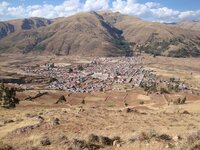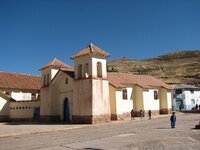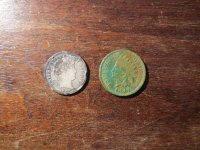Crow
Silver Member
- Jan 28, 2005
- 3,332
- 9,314
- Detector(s) used
- ONES THAT GO BEEP! :-)
- Primary Interest:
- Other

The South African drilling contractor Derry who we worked for was piece of work and deserves a much more detail story of that mans life as it intriguing as well inspirational in some respects in exception of his personality of the man. For he was one of Britain's tragedies after WW2 a lost legion of unwanted orphans that was sent out to Canada, Australia, New Zealand, South Africa and Rhodesia. They are now called today the lost children of British empire orphan dumped onto their past colonies. Some ended up in homes adopted by loving parents overs ended up living with different orphanages run by Priests that abused them. Leaving a whom a generation of scars and loveless people. Derry was one such person. He grew up after years of physical abuse by the church to become mining contractor then drilling contractor in Rhodesia running his own multinational company. He was a tough as nails and skinny as a rake full of muscle not an ounce of fat of goodness. His soul was dark and hard. A man with no interest in life other than work. It was perhaps for him his only escape. He hated Africans with a passion, we guessed it had some thing to with scar down the left hand side of face where at one time some one had a go at him with a machete.
Derry;s strong dedication to work he built up a small empire of Drilling rigs in South Africa, Zimbabwe, Chad, Cameroon. Peru ,chile Bolivia, Australia and New Guinea. He had relocated himself to base himself out of Australia. Some say it was because too many people tried to kill him in South Africa. Personal people skills was almost non existent. How major mining companies dealt with him is beyond me. However even big corporations are not squeaky clean and Derry was an ideal consort for some of their difficult operations. Woe betide falling foul of him I saw him fire men leave them stuck in foreign country with no money. He was a hard hard man to work for and yet in rare moments he would very generous, but his old self was never far away. Trust was neither expected or given either way.
How Ironic was it that his wife was Ethiopian beauty with a personality to match who had lived for a time in Denmark and had a Danish accent. How he kept her was beyond me. He was indifferent with me, Loved Hardluck he could do no wrong. Kanacki he hated for some reason as kanacki never reacted to him. Some say in Australia one of Derry's drillers got on a little too friendly with his wife. The man was found murdered tied to the ground and fence star picket hammered up his back side. There was accusations but nothing ever proven.
That was in some respects our boss who hired us. For us as the company we worked for New guinea came to an end. For them they got caught up in a big mine project that collapsed and they were not paid for all the contact work they had done. This does in the mining game as mining can be a dirty business my friend. Derry took some of the workers. I was first followed by hardluck and Kanacki. how we got to South America in which we met host of interesting people. Such as the tobacco chewing Texan Denis Geologist aka Fog Horn Leghorn whose favorite saying to newbies on the job "Aint in Kansas anymore Toto!" He gave as good as he got! In the spirt of fun and forget the Irish can talk this guy could talk like a runaway freight train.
It was out ticket for us to see South America in a way few people will never see. What we wasn't told the previous few drillers had got their heads cut off by Light of Shining Path Guerrilla group that was active at the time.
However perhaps it was the experience we had gained in New guinea we repeated in South America and by enlarge we got on rather well with the locals. Kanacki had this obsession to bring small plastic toys to village where we went it brought smile to the Kids and perhaps eased the concerns of the elders. With local crews we mixed ourselves dining and living with them as equals. There was no them or us. We shared what we had with them and in some respects the local Peruvian crews who were paid almost nothing appreciated it. And in some cases we assisted some of their family's with medical treatment.
That and respect for the locals went a long way. It was in the course of lunch break one day working about about 100 mile south of Cuzco that the conversation came on my crew about treasure legends and Juan a full blooded Inca, a small wiry fellow with always smiling and a little more intellect than some of his fellow workmates. Told me he was from Tinta. The following story he gave was dating back from the time when Atahulpha was murdered by Pizzaro. The Incas used to mine gold near Tinta and large load of gold was hidden in cave in the Mountains. Was the story True or just another Yarn to pass the time?
Year later I came across the following newspaper story in the Daily Alta California dated 23 June 1885

When Atahualpa . was made ; prisoner at Cajamarca he offered as a ransom, not merely to cover; the floor, but to fill the room- in which I he stood with gold as high as he could reach. The offer was accepted , by the bold but unscrupulous Pizarro. And according to an Indian ' tradition a line was drawn on the wall, all round the room, as high as Atahualpa could reach ; with his right hand, with a red earth called by the Indians taco.
As soon as the agreement '. was : concluded " between Fizarro and Atahualpa the unhappy ; monarch sent chasquis (foot couriers) to all parts ; of his empire, calling upon his subjects to - bring in the promised ransom. A deputation consisting of three Spaniards Pedro Moyner, Francisco Martinez de Zarate and Martin Bueno— marched to - Cuzco ' where, on the recommendation of Atahualpa, they were received with honors and were hospitably : entertained.
The simple-minded ' Indians , had occasion, very soon, to repent of the attentions they "had paid to the Spaniards, for the latter began to 'commit all kinds of excesses. A complaint of the conduct of the members of the deputation having been sent to Pizarro, that chieftain sent his brother, Hernando Pizarro, in January, 1533, with twenty cavalry, to Cuzco, and he returned shortly afterwards to Cajamarca bringing with him twentyseven loads of gold and two thousand marks of silver. The extraordinary activity displayed by the different caciques of the Empire to give effect to the order of their sovereign, is easily ' explained by the intense love the Indians ' felt for their monarch, whose life was now at the mercy of the avaricious Spaniards.
The roads were thronged in all directions with caravans of Indians bearing treasure. Twenty Indians were sent by the cacique Cchnmp-Chupi from the heights of Chumbibilcas, where there exist not only veins of gold, but also gold washings, with a large quantity of gold which they were to deliver' in Cajamarca on account of Atahualpa 's ransom. The faithful Indians pressed on at the top of their speed, their thoughts completely absorbed in the fate of their beloved monarch, when at the Gombapata junction on the road which passes through Tinta to Cuzco, they fell in with an Indian clothed in a scarlet mantle and wearing black tassels on his brow, who amidst tears and lamentations told them the sad story of Pizarro's treachery, and of the murder of their unhappy sovereign.
The poor Indians, realizing that they had lost father, their country and their liberty, burst into tears, and without uttering a word they raised their hands towards heaven. At length one of the Indians in a burst of anger threw down his heavy load, and exclaimed ccata hueqque ! This exclamation is full of meaning. It signifies tears embittered by the thought that the misfortune which causes them cannot be remedied, and at the same time it" is a fierce malediction hurled against the authors of the misfortune. . That word was the signal for the compact among the Indians of war to the death against the murderers of their monarch. It was the signal for the concealment of the wealth of the Empire, and it was repeated while a thousand hiding-places were being dug. The twenty Indians from the heights of Chumbibilcas dug a hole in a cave in the hard rock at Combapata, but where and in what direction is not known, and in it they buried the treasure sent by the caciqne Cchumpi-Chupi.
The sombre cave of Ccatta-Hueqqae still exists, at the distance of half a mile from the historic village of Tinta.It appears to be formed of petrifications, and in every direction the rock appears to be studded with drops of water on the point of falling. Is the hard rock weeping for the unhappy fate of Atahnalpa, or are the drops of the ccatta hueqque — the embittered tears of a disinherited race ?
Was there any truth to this story and is the cave still assessable?
The following picture of Tinta

Today Tinta is a rather sleepy rural town.

And so my friends the countryside around cuzco still echos the story of legends.
Perhaps that is why I found Peru so facinating.
Crow
Amazon Forum Fav 👍
Last edited:


 ? As fo rme, I must beg off until I have finished Tayopa, THEN it's off to see Yma Sumac and the gold.
? As fo rme, I must beg off until I have finished Tayopa, THEN it's off to see Yma Sumac and the gold.
 Even at anchor we always have some one on watch if not a full shift crew.
Even at anchor we always have some one on watch if not a full shift crew.



